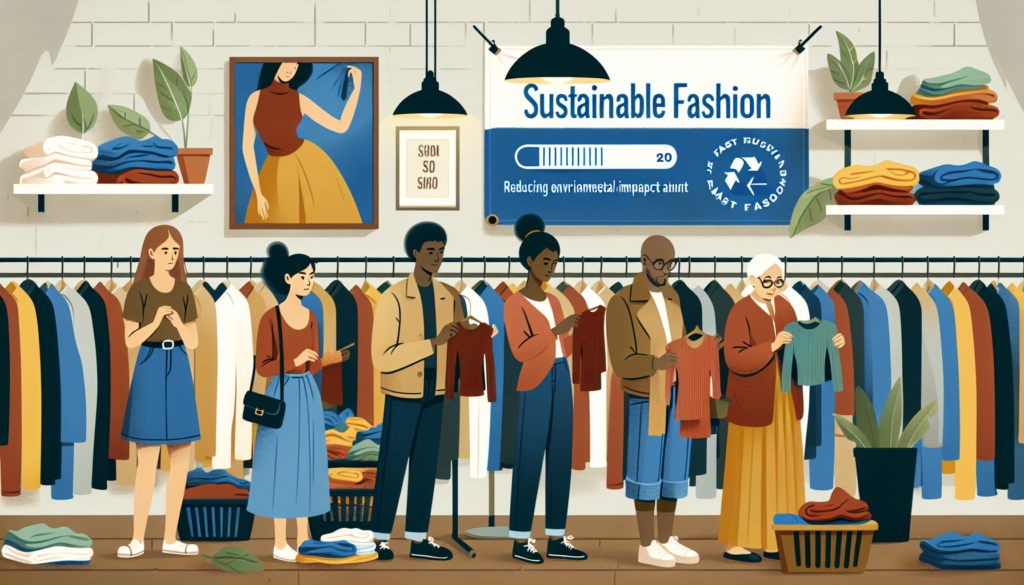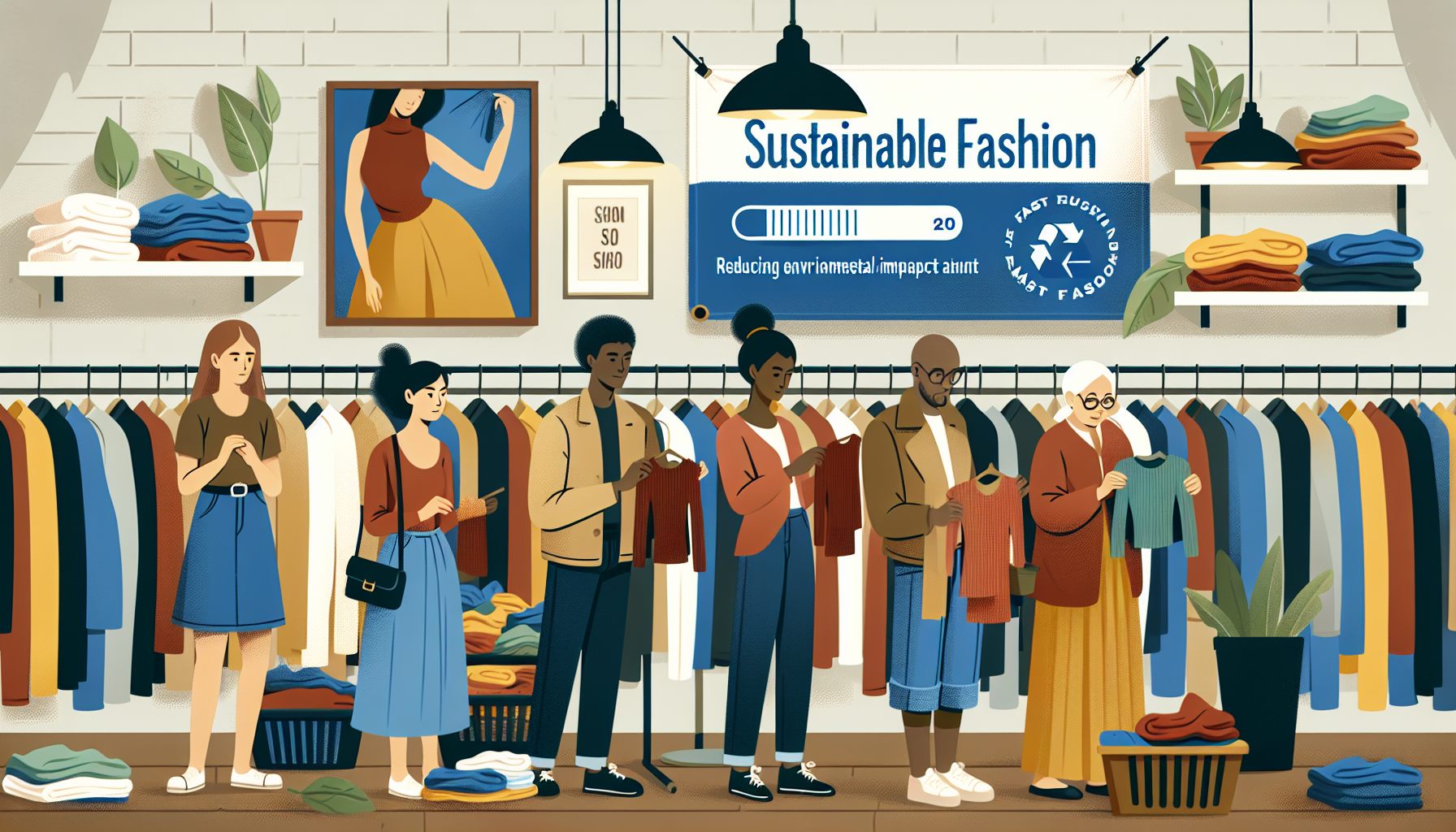The fashion industry is one of the largest polluters in the world, largely due to the rise of fast fashion—a model characterized by cheap, disposable clothing that is produced rapidly in response to the latest trends. Practicing sustainable fashion is a powerful way to reduce environmental impact and promote ethical practices. This article explores the importance of sustainable fashion and provides practical tips on how to make more eco-friendly and ethical choices in your wardrobe.

Key Takeaways
- Fast fashion contributes significantly to environmental degradation and unethical labor practices.
- Sustainable fashion focuses on eco-friendly fabrics, ethical production, and reducing waste.
- Buying second-hand clothing extends the life of garments and reduces demand for new production.
- Supporting ethical brands encourages industry-wide changes toward sustainability.
- Conscious consumer choices can drive positive environmental and social impact.
The Environmental Impact of Fast Fashion
Understanding the detrimental effects of fast fashion is essential to appreciating the need for sustainable alternatives.
Resource Consumption
- Water Usage: It takes approximately 2,700 liters of water to produce one cotton T-shirt.
- Energy Consumption: Synthetic fabrics like polyester require significant amounts of energy to produce.
- Chemical Pollution: Textile production involves toxic chemicals that pollute waterways and soil.
Waste Generation
- Landfill Overload: An estimated 85% of textiles end up in landfills each year.
- Microfiber Pollution: Washing synthetic clothes releases microplastics into oceans, harming marine life.
Carbon Emissions
- Greenhouse Gases: The fashion industry is responsible for about 10% of global carbon emissions.
- Transportation Impact: Fast fashion relies on global supply chains, increasing transportation emissions.
Ethical Concerns
- Labor Exploitation: Workers often face poor working conditions, low wages, and long hours.
- Child Labor: Some supply chains involve child labor due to lack of regulation and oversight.
What Is Sustainable Fashion?
Sustainable fashion aims to minimize the environmental and social impacts of clothing production and consumption.
Eco-Friendly Fabrics
- Organic Cotton: Grown without synthetic pesticides or fertilizers.
- Bamboo: A fast-growing plant requiring less water and no pesticides.
- Hemp: Durable and requires minimal resources to grow.
- Recycled Materials: Fabrics made from recycled plastics or textiles reduce waste.
Ethical Production Practices
- Fair Wages: Ensuring workers are paid fairly for their labor.
- Safe Working Conditions: Compliance with safety standards to protect workers’ health.
- Transparency: Brands openly sharing information about their supply chains and practices.
Circular Fashion
- Upcycling: Transforming old garments into new products.
- Recycling: Breaking down materials to create new fabrics.
- Repair and Resale: Extending the life of clothing through mending and second-hand markets.
“Sustainable fashion is not a trend but a responsible choice that respects both people and the planet.”
How to Practice Sustainable Fashion
Implementing sustainable fashion practices can be both rewarding and stylish.
Opt for Clothing Made from Sustainable Fabrics
- Read Labels: Check for materials like organic cotton, bamboo, hemp, or recycled fabrics.
- Certifications to Look For:
- GOTS (Global Organic Textile Standard): Ensures organic status and social criteria.
- Fair Trade Certified: Guarantees fair wages and ethical labor practices.
- OEKO-TEX Standard 100: Tests for harmful substances in textiles.
Buy Second-Hand Clothing
- Thrift Stores: Find unique pieces at affordable prices.
- Consignment Shops: Access higher-end items with less environmental impact.
- Online Marketplaces: Platforms like Depop, Poshmark, or eBay offer a wide selection.
- Benefits:
- Reduces Waste: Extends the life of garments, keeping them out of landfills.
- Lower Carbon Footprint: Minimizes the demand for new production.
Support Ethical Brands
- Research Brands: Look for companies committed to sustainability and ethical practices.
- Brand Transparency: Choose brands that openly share their manufacturing processes.
- Local Designers: Support small businesses that produce locally, reducing transportation emissions.
Create a Capsule Wardrobe
- Quality Over Quantity: Invest in timeless, high-quality pieces that last longer.
- Versatility: Choose items that can be mixed and matched for various looks.
- Benefits:
- Saves Money: Reduces the need for frequent purchases.
- Simplifies Choices: Streamlines your wardrobe for easier outfit selection.
Care for Your Clothes
- Proper Washing: Follow care instructions to extend garment life.
- Repair and Mend: Fix minor damages instead of discarding items.
- Responsible Disposal: Donate or recycle clothing you no longer need.
Overcoming Common Challenges
Addressing obstacles makes practicing sustainable fashion more accessible.
Cost Concerns
- Investment Pieces: While sustainable items may cost more upfront, they offer long-term value.
- Budget-Friendly Options: Thrifting and swapping clothes are cost-effective ways to be sustainable.
Style Preferences
- Variety in Sustainable Fashion: Many brands offer fashionable designs without compromising ethics.
- Personal Expression: Use accessories and unique pieces to express your style sustainably.
Availability Issues
- Online Shopping: Access a wider range of sustainable brands and products.
- Community Events: Participate in clothing swaps and local sustainable fashion events.
The Collective Impact
Individual actions can drive significant change in the fashion industry.
- Consumer Demand: Increases pressure on brands to adopt sustainable practices.
- Environmental Benefits: Reduces pollution, conserves resources, and lowers carbon emissions.
- Social Impact: Promotes fair labor practices and improved working conditions globally.
Conclusion
Practicing sustainable fashion is a meaningful way to reduce your environmental footprint and promote ethical labor practices. By opting for clothing made from eco-friendly fabrics, buying second-hand, and supporting ethical brands, you contribute to a more sustainable and just fashion industry. Every conscious choice in your wardrobe not only reflects your personal style but also your commitment to a healthier planet and society.
FAQ
What is sustainable fashion?
Sustainable fashion refers to clothing that is designed, produced, and distributed in ways that are environmentally friendly and socially responsible. It emphasizes the use of sustainable materials, ethical labor practices, and methods that reduce waste and pollution.
Why is fast fashion harmful to the environment?
Fast fashion is harmful because it encourages rapid production of low-quality clothing, leading to increased waste. It often involves environmentally damaging production processes, high resource consumption, and significant carbon emissions. Additionally, it can involve unethical labor practices.
How can I identify ethical brands?
- Transparency: Look for brands that openly share their manufacturing processes and labor practices.
- Certifications: Check for certifications like Fair Trade, GOTS, or B Corp.
- Sustainability Reports: Brands committed to ethics often publish detailed sustainability reports.
Are sustainable fabrics better for the environment?
Yes, sustainable fabrics are generally better because they require fewer resources to produce, use less harmful chemicals, and are often biodegradable or recyclable. Examples include organic cotton, hemp, bamboo, and fabrics made from recycled materials.
Is sustainable fashion more expensive?
While some sustainable fashion items may have higher upfront costs due to ethical production and quality materials, they often last longer, providing better value over time. Buying second-hand or during sales can make sustainable fashion more affordable.
How does buying second-hand clothing help?
Buying second-hand extends the life of garments, reduces demand for new production, conserves resources, and minimizes waste. It also lowers carbon emissions associated with manufacturing and transporting new clothing.
What can I do with clothes I no longer wear?
- Donate: Give to charities or shelters.
- Sell: Use consignment shops or online marketplaces.
- Recycle: Find textile recycling programs in your area.
- Upcycle: Repurpose old clothing into new items.
By embracing sustainable fashion, you’re making a positive impact on the environment and supporting ethical labor practices. Your choices can inspire others and contribute to a global shift toward a more sustainable and responsible fashion industry.


Leave a Reply